Contents

What does a cake contain to deserve the name magic? Magic cakes are made simply of eggs, sugar, flour, butter and milk. So whats magic about that, you might ask. There may be nothing unusual about the ingredients, but the magic happens in the baking. The batter of the cake is very liquid, so it divides into three layers by itself, each with its own texture and flavour: the base of the cake is a dense, moist cake base; a light delicate cream forms in the middle; the top layer is a lovely light Genoise sponge. How is this even possible? The egg yolks, beaten with the sugar, butter, flour and milk, form the first two layers of the magic cake: the base and the cream. What happens is that slow cooking at 150C (300F/Gas 2) allows the bottom of the cake to cook like a cake without cooking the upper part, which retains its creamy texture.
For this reason it is best to use a conventional oven rather than a fan-assisted one. The beaten egg whites form the Genoise sponge layer. They do not blend with the milk and instead remain floating on top of the cake!  One mixture, one bake and the result: three cakes in one. Just follow the rules below and this easy-to-make dessert will cause a sensation! 1. The tin size It is important that the size of your baking tin corresponds exactly to the quantity of ingredients in the recipe. If your tin is too small, you might not be able to pour all your beaten egg whites on top, resulting in a Genoise layer that is too thin.
One mixture, one bake and the result: three cakes in one. Just follow the rules below and this easy-to-make dessert will cause a sensation! 1. The tin size It is important that the size of your baking tin corresponds exactly to the quantity of ingredients in the recipe. If your tin is too small, you might not be able to pour all your beaten egg whites on top, resulting in a Genoise layer that is too thin.
Conversely, if your tin is too big, each layer will be too thin and it will be difficult to tell them apart. For the majority of the recipes in this book, we use a 24 cm (9 in) round cake tin. 2. The egg whites To incorporate the egg whites into the liquid mixture, it is best to use a whisk and work the mass gently so that it doesnt dissolve into the batter: large lumps should remain. In fact it is difficult to incorporate egg whites into a liquid mixture using a wooden spoon. 3. 3.
Baking If the cake is not fully baked, it will not hold together. If it is overcooked, the layer of cream will disappear. At the end of the baking time given in the recipe, the cake should still have a slight wobble, which will set when it is chilled. The upper layer the Genoise sponge should be well baked and golden. All the cooking times indicated in the recipes correspond to a conventional oven. 4. 4.
Turning out the cake It is vital to wait for the magic cake to set before turning it out. It should be kept chilled for at least 2 hours. It will be easier to turn out if you use a silicone cake tin. Otherwise, it is best to line your tin with baking parchment. 5. Tasting The magic cake will taste better after spending a few hours, or even overnight, in the fridge, giving the flavours time to develop.
So dont leave it until the last minute to make and be patient! 
 Serves 8 Preparation: 20 minutes Cooking time: 50 minutes Resting time: 1 + 2 hours 2 vanilla pods 500 ml (17 fl oz) milk 4 eggs, separated 150 g (5 oz) caster (superfine sugar 1 sachet vanilla sugar 1 tablespoon water 125 g (4 oz) butter 110 g (3 oz) plain (all-purpose) flour pinch of salt 24 cm (9 in) cake tin, silicone or greased with butter and lined with baking parchment Split the vanilla pods down the middle and scrape out the seeds with the blade of a knife. Heat the milk with the vanilla seeds and the open pods. Bring to the boil, then immediately remove from the heat and leave to infuse for at least 1 hour. The more infused the vanilla, the more intense the taste. Preheat the oven to 150C (300F/Gas 2). Whisk the yolks with the sugar and water until the mixture whitens.
Serves 8 Preparation: 20 minutes Cooking time: 50 minutes Resting time: 1 + 2 hours 2 vanilla pods 500 ml (17 fl oz) milk 4 eggs, separated 150 g (5 oz) caster (superfine sugar 1 sachet vanilla sugar 1 tablespoon water 125 g (4 oz) butter 110 g (3 oz) plain (all-purpose) flour pinch of salt 24 cm (9 in) cake tin, silicone or greased with butter and lined with baking parchment Split the vanilla pods down the middle and scrape out the seeds with the blade of a knife. Heat the milk with the vanilla seeds and the open pods. Bring to the boil, then immediately remove from the heat and leave to infuse for at least 1 hour. The more infused the vanilla, the more intense the taste. Preheat the oven to 150C (300F/Gas 2). Whisk the yolks with the sugar and water until the mixture whitens.
Melt the butter and stir it into the mixture. Fold in the flour and salt and beat for a few minutes until well combined. Remove the vanilla pods from the milk. Pour it into the batter little by little, whisking constantly. Beat the egg whites until stiff and, using a whisk, gently incorporate them into the batter. Pour the batter into the greased tin, smooth the surface with the blade of a knife and bake in the oven for 50 minutes.
When the cake comes out of the oven it will wobble slightly. Before turning it out, leave it to set in the fridge for at least 2 hours. Serve chilled. Chefs tip Dust the cake with icing (confectioners) sugar. 
 Serves 10 Preparation: 20 minutes Cooking time: 50 minutes Resting time: 2 hours 3 eggs, separated 75 g (2 oz) caster (superfine) sugar 1 tablespoon water 1 teaspoon vanilla extract 75 g (2 oz) butter 120 g (4 oz) white chocolate 75 g (2 oz) plain (all-purpose) flour pinch of salt 370 ml (12 fl oz) milk, at room temperature 10 cm (4 in) x 24 cm (9 in) deep, square cake tin, silicone or greased with butter and lined with baking parchment Preheat the oven to 150C (300F/Gas 2). Whisk the egg yolks with the sugar and water until the mixture whitens.
Serves 10 Preparation: 20 minutes Cooking time: 50 minutes Resting time: 2 hours 3 eggs, separated 75 g (2 oz) caster (superfine) sugar 1 tablespoon water 1 teaspoon vanilla extract 75 g (2 oz) butter 120 g (4 oz) white chocolate 75 g (2 oz) plain (all-purpose) flour pinch of salt 370 ml (12 fl oz) milk, at room temperature 10 cm (4 in) x 24 cm (9 in) deep, square cake tin, silicone or greased with butter and lined with baking parchment Preheat the oven to 150C (300F/Gas 2). Whisk the egg yolks with the sugar and water until the mixture whitens.
Add the vanilla extract. Melt the butter and white chocolate together. Gently stir into the egg mixture. Then add the flour and salt. Beat for a few minutes. Pour in the milk little by little, whisking constantly.
Beat the egg whites until stiff and, using a whisk, gently incorporate them into the batter. Pour the batter into the greased cake tin, smooth the surface with the blade of a knife and bake in the oven for 50 minutes. When the cake comes out of the oven it will wobble slightly. Before turning it out, leave it to set in the fridge for at least 2 hours. Serve chilled. Chefs tip To add a ganache topping, melt 150 g (5 oz) white chocolate then, away from the heat, add 70 ml (2 fl oz) double (full-fat) cream or whipping cream.
Chill in the fridge for at least 2 hours, then whip the ganache for about 10 minutes until thick. Dust with icing (confectioners) sugar before serving. 
 Serves 8 Preparation: 45 minutes Cooking time: 5 + 55 minutes Resting time: 2 hours Caramel 300 g (10 oz) caster (superfine) sugar a few drops of lemon juice 150 ml (5 fl oz) single cream, warmed 75 g (2 oz) salted butter, cold Cake 450 ml (15 fl oz) milk 4 eggs, separated 70 g (2 oz) salted butter, melted 90 g (3 oz) plain (all-purpose) flour pinch of salt 24 cm (9 in) cake tin, silicone or greased with butter and lined with baking parchment Begin by preparing the caramel. Heat the sugar and lemon juice in a large thick-bottomed saucepan until the sugar melts and turns a caramel colour. It is best to check the colour with a wooden spoon as the caramel can look dark in the bottom of the saucepan. Add the warm cream, taking care not to splash.
Serves 8 Preparation: 45 minutes Cooking time: 5 + 55 minutes Resting time: 2 hours Caramel 300 g (10 oz) caster (superfine) sugar a few drops of lemon juice 150 ml (5 fl oz) single cream, warmed 75 g (2 oz) salted butter, cold Cake 450 ml (15 fl oz) milk 4 eggs, separated 70 g (2 oz) salted butter, melted 90 g (3 oz) plain (all-purpose) flour pinch of salt 24 cm (9 in) cake tin, silicone or greased with butter and lined with baking parchment Begin by preparing the caramel. Heat the sugar and lemon juice in a large thick-bottomed saucepan until the sugar melts and turns a caramel colour. It is best to check the colour with a wooden spoon as the caramel can look dark in the bottom of the saucepan. Add the warm cream, taking care not to splash.

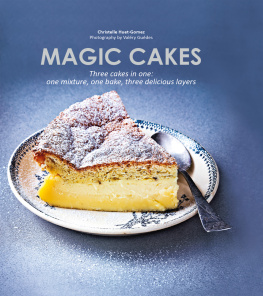

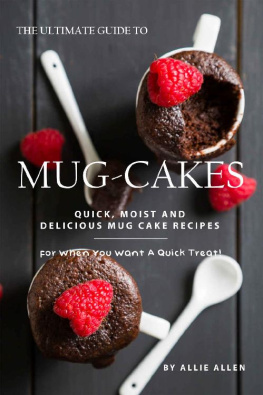
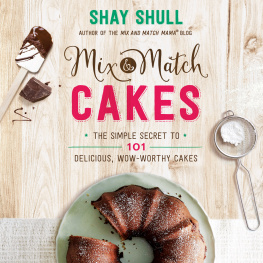
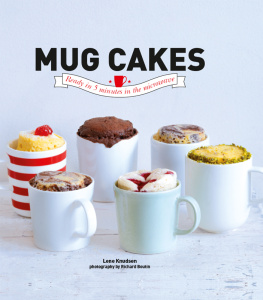
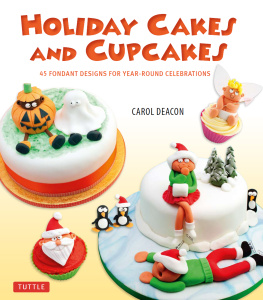
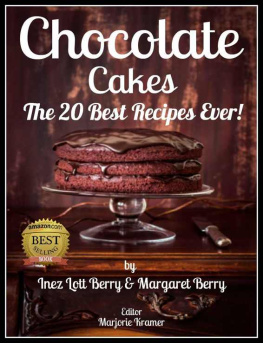


 What does a cake contain to deserve the name magic? Magic cakes are made simply of eggs, sugar, flour, butter and milk. So whats magic about that, you might ask. There may be nothing unusual about the ingredients, but the magic happens in the baking. The batter of the cake is very liquid, so it divides into three layers by itself, each with its own texture and flavour: the base of the cake is a dense, moist cake base; a light delicate cream forms in the middle; the top layer is a lovely light Genoise sponge. How is this even possible? The egg yolks, beaten with the sugar, butter, flour and milk, form the first two layers of the magic cake: the base and the cream. What happens is that slow cooking at 150C (300F/Gas 2) allows the bottom of the cake to cook like a cake without cooking the upper part, which retains its creamy texture.
What does a cake contain to deserve the name magic? Magic cakes are made simply of eggs, sugar, flour, butter and milk. So whats magic about that, you might ask. There may be nothing unusual about the ingredients, but the magic happens in the baking. The batter of the cake is very liquid, so it divides into three layers by itself, each with its own texture and flavour: the base of the cake is a dense, moist cake base; a light delicate cream forms in the middle; the top layer is a lovely light Genoise sponge. How is this even possible? The egg yolks, beaten with the sugar, butter, flour and milk, form the first two layers of the magic cake: the base and the cream. What happens is that slow cooking at 150C (300F/Gas 2) allows the bottom of the cake to cook like a cake without cooking the upper part, which retains its creamy texture.  One mixture, one bake and the result: three cakes in one. Just follow the rules below and this easy-to-make dessert will cause a sensation! 1. The tin size It is important that the size of your baking tin corresponds exactly to the quantity of ingredients in the recipe. If your tin is too small, you might not be able to pour all your beaten egg whites on top, resulting in a Genoise layer that is too thin.
One mixture, one bake and the result: three cakes in one. Just follow the rules below and this easy-to-make dessert will cause a sensation! 1. The tin size It is important that the size of your baking tin corresponds exactly to the quantity of ingredients in the recipe. If your tin is too small, you might not be able to pour all your beaten egg whites on top, resulting in a Genoise layer that is too thin.
 Serves 8 Preparation: 20 minutes Cooking time: 50 minutes Resting time: 1 + 2 hours 2 vanilla pods 500 ml (17 fl oz) milk 4 eggs, separated 150 g (5 oz) caster (superfine sugar 1 sachet vanilla sugar 1 tablespoon water 125 g (4 oz) butter 110 g (3 oz) plain (all-purpose) flour pinch of salt 24 cm (9 in) cake tin, silicone or greased with butter and lined with baking parchment Split the vanilla pods down the middle and scrape out the seeds with the blade of a knife. Heat the milk with the vanilla seeds and the open pods. Bring to the boil, then immediately remove from the heat and leave to infuse for at least 1 hour. The more infused the vanilla, the more intense the taste. Preheat the oven to 150C (300F/Gas 2). Whisk the yolks with the sugar and water until the mixture whitens.
Serves 8 Preparation: 20 minutes Cooking time: 50 minutes Resting time: 1 + 2 hours 2 vanilla pods 500 ml (17 fl oz) milk 4 eggs, separated 150 g (5 oz) caster (superfine sugar 1 sachet vanilla sugar 1 tablespoon water 125 g (4 oz) butter 110 g (3 oz) plain (all-purpose) flour pinch of salt 24 cm (9 in) cake tin, silicone or greased with butter and lined with baking parchment Split the vanilla pods down the middle and scrape out the seeds with the blade of a knife. Heat the milk with the vanilla seeds and the open pods. Bring to the boil, then immediately remove from the heat and leave to infuse for at least 1 hour. The more infused the vanilla, the more intense the taste. Preheat the oven to 150C (300F/Gas 2). Whisk the yolks with the sugar and water until the mixture whitens.
 Serves 10 Preparation: 20 minutes Cooking time: 50 minutes Resting time: 2 hours 3 eggs, separated 75 g (2 oz) caster (superfine) sugar 1 tablespoon water 1 teaspoon vanilla extract 75 g (2 oz) butter 120 g (4 oz) white chocolate 75 g (2 oz) plain (all-purpose) flour pinch of salt 370 ml (12 fl oz) milk, at room temperature 10 cm (4 in) x 24 cm (9 in) deep, square cake tin, silicone or greased with butter and lined with baking parchment Preheat the oven to 150C (300F/Gas 2). Whisk the egg yolks with the sugar and water until the mixture whitens.
Serves 10 Preparation: 20 minutes Cooking time: 50 minutes Resting time: 2 hours 3 eggs, separated 75 g (2 oz) caster (superfine) sugar 1 tablespoon water 1 teaspoon vanilla extract 75 g (2 oz) butter 120 g (4 oz) white chocolate 75 g (2 oz) plain (all-purpose) flour pinch of salt 370 ml (12 fl oz) milk, at room temperature 10 cm (4 in) x 24 cm (9 in) deep, square cake tin, silicone or greased with butter and lined with baking parchment Preheat the oven to 150C (300F/Gas 2). Whisk the egg yolks with the sugar and water until the mixture whitens.
 Serves 8 Preparation: 45 minutes Cooking time: 5 + 55 minutes Resting time: 2 hours Caramel 300 g (10 oz) caster (superfine) sugar a few drops of lemon juice 150 ml (5 fl oz) single cream, warmed 75 g (2 oz) salted butter, cold Cake 450 ml (15 fl oz) milk 4 eggs, separated 70 g (2 oz) salted butter, melted 90 g (3 oz) plain (all-purpose) flour pinch of salt 24 cm (9 in) cake tin, silicone or greased with butter and lined with baking parchment Begin by preparing the caramel. Heat the sugar and lemon juice in a large thick-bottomed saucepan until the sugar melts and turns a caramel colour. It is best to check the colour with a wooden spoon as the caramel can look dark in the bottom of the saucepan. Add the warm cream, taking care not to splash.
Serves 8 Preparation: 45 minutes Cooking time: 5 + 55 minutes Resting time: 2 hours Caramel 300 g (10 oz) caster (superfine) sugar a few drops of lemon juice 150 ml (5 fl oz) single cream, warmed 75 g (2 oz) salted butter, cold Cake 450 ml (15 fl oz) milk 4 eggs, separated 70 g (2 oz) salted butter, melted 90 g (3 oz) plain (all-purpose) flour pinch of salt 24 cm (9 in) cake tin, silicone or greased with butter and lined with baking parchment Begin by preparing the caramel. Heat the sugar and lemon juice in a large thick-bottomed saucepan until the sugar melts and turns a caramel colour. It is best to check the colour with a wooden spoon as the caramel can look dark in the bottom of the saucepan. Add the warm cream, taking care not to splash.